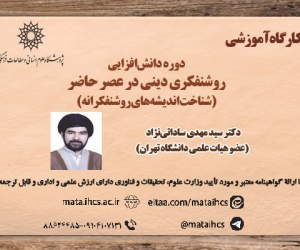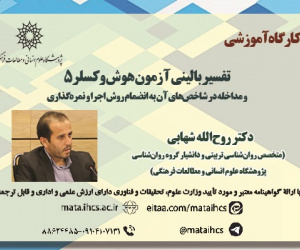بلاغت تصویر در رباعی های بیژن ارژن (مقاله علمی وزارت علوم)
درجه علمی: نشریه علمی (وزارت علوم)
آرشیو
چکیده
شماری از رباعی سرایان معاصر توانسته اند سنّت های گذشته را با ذوق خود بیامیزند و آثاری ماندگار خلق کنند؛ از این رو قالبی مانند رباعی هم توانسته، در کنار پایبندی به سنّت، بستری برای مدرنیته (نوگرایی) باشد. مدرنیته رویکردی به نو شدن و شیوه ای از اندیشه و احساس است که، در سده های اخیر، به یک جریان مسلّط اجتماعی و فکری تبدیل شده . رباعی سرایان، به شیوه های گوناگون، به نو کردن این قالب اهتمام داشته اند که یکی از آن ها «تحوّل خیال» است. بیژن ار ژن از رباعی سرایان نو گرایی است که گونه گونیِ تصویر در رباعی هایش مشهود است. در جستار حاضر، با روش توصیفی تحلیلی و با نگاه ویژه به کتاب چارانه های بیژن ارژن، تحوّل خیال و تصویر در رباعی های این شاعر بررسی خواهد شد. بنا بر یافته های پژوهش، در رباعی های او هم تصاویر خیال محور دیده می شود که معمولاً در سطح شکل گرفته اند و هم تصاویر تخیّل محور که در عمق سامان یافته اند. تصاویر رباعی های ارژن را براساس تصاویر مکاتبی چون رمانتیسیسم (احساسات گرایی)، رئالیسم (واقع گرایی)، سمبولیسم (نمادگرایی)، ایماژیسم (تصویرگرایی)، و سوررئالیسم (فراواقع گرایی) می توان تحلیل کرد. در رباعی های متضمّن تصاویر رئالیستی (واقع گرا)، تصویرْ تکّه تجسّم پذیری از واقعیّت است که در خود حرفی نهفته دارد و براساس منطق تصویرگری در بلاغت کهن شکل نگرفته است. در تصاویر رمانتیک (احساسی) و سمبلیک (نمادین)، تصویر پلی است میان عالم حسّ و ادراک. در رباعی های ایماژیستی، تصویر قائم به خود است و شکل گرفتن رباعی به قصد بیان هیچ گونه حسّ و اندیشه ای نبوده . رباعی های سوررئالیستی دربرگیرنده تصاویری است که نظم جهان و پدیده ها را به هم می ریزد و دنیایی تازه و ناشناخته خلق می کند.The Rhetoric of Image in Bijan Arjan's Quatrains
A number of contemporary quatrain poets have managed to blend past traditions with their own unique taste, creating enduring works. As such, a form like the quatrain has been able to serve as a foundation for modernity while adhering to tradition. Modernity is an approach to renewal and a way of thinking and feeling that has always been possible but, in recent centuries, has become a dominant social and intellectual current. Quatrain poets have endeavored to modernize this form in various ways, one of which is the transformation of imagery. Bijan Arjan is a modernist quatrain poet whose quatrains exhibit a diversity of imagery.
In this study, using a descriptive-analytical method with a special focus on Bijan Arjan's book Charaneh, the transformation of imagery and imagination in this poet's quatrains will be examined. Based on the research findings, both imagination-oriented images, usually formed at a superficial level, and imagination-centered images, which are organized at a deeper level, can be seen in his quatrains. Arjan's quatrain images can be analyzed based on images from schools such as romanticism, realism, symbolism, imagism, and surrealism.
In quatrains containing realistic images, the image is a tangible piece of reality that contains a hidden message and is not based on the logic of imagery in classical rhetoric. In romantic and symbolic images, the image is a bridge between the world of sensation and perception. In imagist quatrains, the image is self-sufficient, and the quatrain is not formed with the intention of expressing any particular feeling or thought. Surrealist quatrains contain images that disrupt the order of the world and phenomena, creating a new and unknown world.







